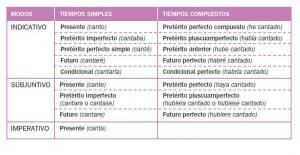Analysis of simple reflexive and reciprocal sentences
In this video I will explain how to do the analysis of simple reflexive and reciprocal sentences. I wanted to dedicate an entire video to this analysis because it can create confusion when the direct and indirect complement coincide.
To do the analysis of these sentences we will follow the steps of the analysis of simple sentences: steps to analyze simple sentences but in this case we will do it specifically for reflective and reciprocal sentences.
The steps to follow are as follows:
- read and understand the sentence
- morphology
- look for the verb
- search for the Subject
- mark the Verbal Phrase and the Nominal Phrase
- set plugins
- mark the type of prayer we are facing
The trick to be able to analyze these simple reflexive and reciprocal sentences well is the following:
If in reflexive or reciprocal sentences we find a direct object, the pronoun will act as an indirect object. On the other hand, if we do not find a direct object, the pronoun will act as a direct object.
All this you will understand much better in the video since I explain it from four Morphosyntactic analysis of sentences.
In addition, you can practice what you have learned in this lesson if you do the printable exercises with their solutions that I have left you on the web.


